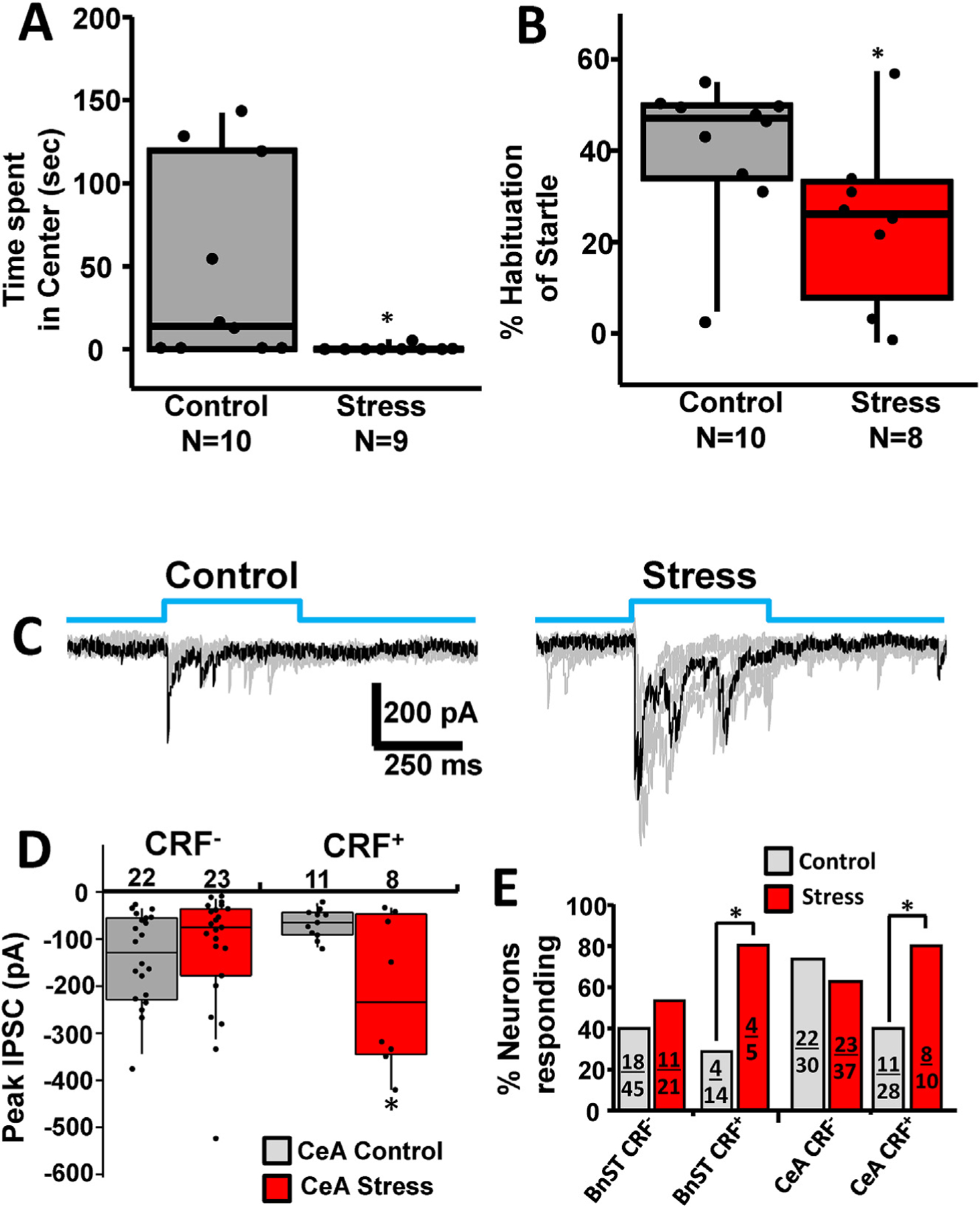Fig. 5.

Chronic Unpredictable Stress induces anxiety-like behavior in wild type mice and affects synaptic connectivity in CRF+ neurons in BnST and CeA. (A) Two days after cessation of chronic stress (consistent with the timing used in our electrophysiological experiments), stressed animals showed increased anxiety-like behavior in the open field. This is evident in a significant decrease in the time spent in the center of the arena. *p < 0.05, Mann-Whitney test. (B) Two weeks after cessation of chronic stress, anxiety-like behavior was assessed by habituation to acoustic startle (120 dB white noise). Animals exposed to chronic unpredictable stress displayed significantly less habituation of the acoustic startle response. *, p < 0.05, Mann-Whitney test.(C) Delivery of blue light (top, blue steps) evoked IPSCs from a CRF+ neuron from a control (left) and a stressed animal (right). Superimposed multiple trial traces are shown in gray and example traces in black. (D) Summary box and whisker plots comparing the peak IPSC from control (gray) and stressed (red) neurons for 400 ms blue pulses. (E) Chi-square analysis of the % neurons responding to light with PSCs are shown in control (gray) or stressed (red) conditions. Fractions inside each bar correspond to the number of responding neurons (numerator) over the total number of cells recorded (denominator). *, p < 0.05.
